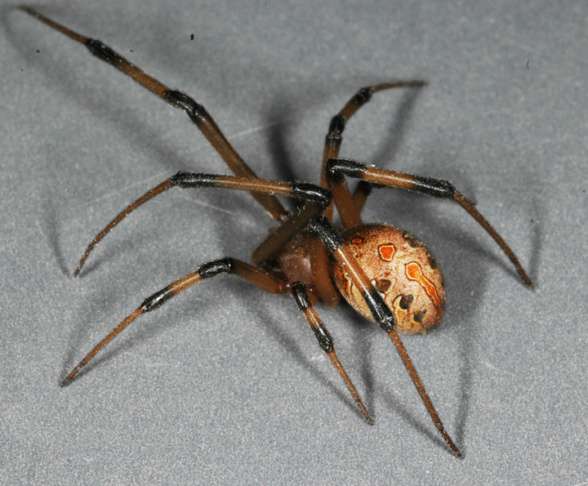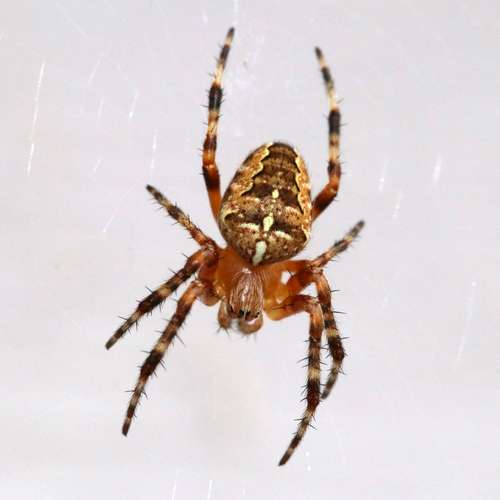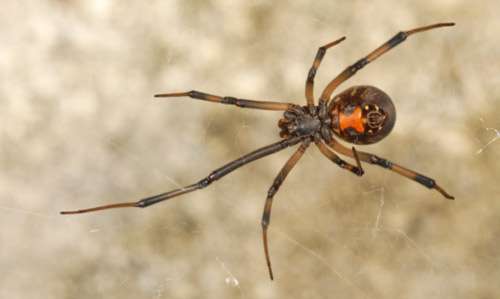
Latrodectus geometricus, also known as the brown widow, brown button spider, gray widow, brown black widow, home button spider, or geometric button spider, is one of the widow spiders in the genus Latrodectus. As a result, it can be considered a “relative” of the more infamous Latrodectus mactans (black widow). This spider has an hourglass-shaped abdomen that is orange-yellow in hue and covered with black and white designs on the sides. The points that protrude from their egg sacs’ surface make it simple to identify their eggs. L. Geometricus are widespread but are thought to have come from South America. Although unpleasant, their bites are not thought to be hazardous.
Appearance
L. Geometricus can range in color from tan to dark brown to black, with shades of grey also being a possibility. It is slightly smaller and generally lighter in color than the black widow species. Similar to the American black widow species, L. The underside of the abdomen of geometricus has a distinct hourglass-shaped marking; the brown widow’s hourglass, on the other hand, is typically a bright orange or yellowish color. L. is not like the black widow. The dorsal side of the abdomen of geometricus is covered in a black-and-white geometric design. On their legs are stripes as well.

Habitat
The spread of the brown widow is cosmopolitan. With introductions to the Poland, Americas, the Middle East, Pakistan, Thailand, India, Japan, Papua New Guinea, China, Australia and Hawaii, the World Spider Catalog lists Africa as its native distribution. Some experts believe it originated in South Africa, although this is debatable because specimens have been found in both Africa and South America. In tropical settings, they are typically found near buildings. They can compete with black widow spider populations. Numerous regions of Australia, Japan, the Dominican Republic, Cyprus, Hawaii, South Africa, Japan, and the United States (particularly Hawaii) also contain it.
Reproduction
Brown widows are prolific breeders because they can lay a large number of egg sacs throughout their lifetime, frequently several at once. They can produce 20 egg sacs in their lives and lay roughly 120–150 eggs each sac. The larger western black widow spiders, in contrast, produce roughly 10 egg sacs before they pass away while laying about 300 eggs each sac.
Diet
Like many spiders, brown widows eat common insects like roaches, beetles, flies, mosquitoes, ants, and crickets.
Venom
Although a brown widow spider bite hurts, it is not as hazardous as a black widow spider bite. When a brown widow bites someone, the victim is likely to experience burning, swelling, and perhaps muscle spasms. Although a specialist can cure these bites with ease, they can still be excruciatingly painful.
Requirements for Keeping as Pet
The brown widow spider Latrodectus can be maintained as a pet, but only under the strictest conditions because of its strong venom. A cage that has been turned upside-down is the ideal environment for housing a brown widow spider. You can open the cage using this set up without upsetting your pet or its web. Your brown widow spider would be well-protected in terrariums, jars, and aquariums, where it would have plenty of room to weave its web.
Table





